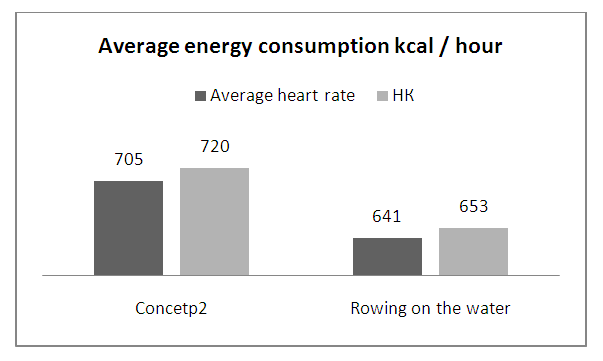-
Paper Information
- Next Paper
- Previous Paper
- Paper Submission
-
Journal Information
- About This Journal
- Editorial Board
- Current Issue
- Archive
- Author Guidelines
- Contact Us
American Journal of Medicine and Medical Sciences
p-ISSN: 2165-901X e-ISSN: 2165-9036
2022; 12(3): 333-334
doi:10.5923/j.ajmms.20221203.21
Received: Feb. 22, 2022; Accepted: Mar. 11, 2022; Published: Mar. 17, 2022

Possibilities of Using the Method of Measuring the Average Heart Rate Adjusted for the Load Test to Assess the Energy Consumption of Academic Rowers
Malkov A. V.
Republican Scientific and Practical Center for Sports Medicine, Uzbekistan
Correspondence to: Malkov A. V., Republican Scientific and Practical Center for Sports Medicine, Uzbekistan.
Copyright © 2022 The Author(s). Published by Scientific & Academic Publishing.
This work is licensed under the Creative Commons Attribution International License (CC BY).
http://creativecommons.org/licenses/by/4.0/

The article discusses the possibilities of using the method of indirect calorimetry in combination with the method of measuring the average pulse to determine the energy consumption during physical activity in academic rowers.
Keywords: Indirect calorimetry, Energy expenditure, Heart rate monitoring, Rowing
Cite this paper: Malkov A. V., Possibilities of Using the Method of Measuring the Average Heart Rate Adjusted for the Load Test to Assess the Energy Consumption of Academic Rowers, American Journal of Medicine and Medical Sciences, Vol. 12 No. 3, 2022, pp. 333-334. doi: 10.5923/j.ajmms.20221203.21.
1. Introduction
- Elite athletes are subject to high fluctuations in daily energy expenditure due to changes in energy expenditure during physical activity and changes in basal metabolic rate. For example, the training load of high-class endurance athletes (marathon runners, cyclists, triathletes) can vary from 500 to 1000 hours per year [2,3]. During heavy competition sessions such as the Tour de France, energy expenditure for physical activity can be up to five times higher than basal metabolic rate [4]. On the other hand, during the recovery period, daily energy consumption can decrease to the level of a sedentary lifestyle [1]. As some studies show, individual energy consumption can differ greatly from the recommended norms [6]. For example, for rowers with a large body weight and a low percentage of fat, the basal metabolic rate was higher [5]. Therefore, the determination of daily energy consumption at all stages of preparation is of practical importance for maintaining energy balance.Sufficiently accurate, and at the same time more convenient in practice, are portable open circulating exhaled air collection systems, or metabolographs. For example, the COSMED FitMate metabolograph used by us at the Republican Scientific and Practical Center for Sports Medicine proved to be a reliable system for measuring oxygen consumption and basal metabolism in studies [10,11]. At present, small-sized metabolographs are available, which makes it possible to carry out measurements in the “field” conditions [8,9].To measure energy costs during physical activity, the method of indirect calorimetry in combination with continuous monitoring of the pulse seems promising [12,7]. Pulse monitoring can be carried out using a wearable chest monitor that reads the electrical potentials of the heart from the surface of the body using electrodes built into the belt. Studies show that the chest monitor option is more accurate in heart rate measurement, as well as more comfortable to wear, so it is better suited for monitoring heart rate during exercise. Indirect calorimetry is used for the so-called "calibration", which consists in the individual measurement of energy consumption during the step test on the rowing machine, medium and high physical activity.
2. Materials and Methods
- Field-available indirect calorimetry with a portable metabolograph and pulse-corrected energy expenditure measurements during a stepped exercise test were chosen as the comparison methods. In total, 12 male academic rowers, who compete for national teams, aged from 19 to 28 years old, were examined, the average age was 21.2 years. The weight of the subjects was from 64 to 105 kg, the average weight was 82.5 kg. The FitMate model metabolograph was used to measure energy consumption during exercise. Pro, COSMED company (Italy). Calibration of the apparatus was carried out according to the regulations declared by the manufacturer. A step load test with determination of energy expenditure was performed after a daily rest using a Concept 2 rowing machine according to an individual protocol, increasing each step by 30 watts, until failure was reached. The step load test report noted energy expenditure and heart rate versus load, followed by a graph of energy expenditure versus average heart rate. Energy expenditure monitoring by indirect calorimetry and step test-adjusted average heart rate monitoring was performed directly during rowing sessions on the Concept 2 rowing machine and rowing on the water. Heart rate monitoring was performed using a Polar chest monitor, model H 10, using software from the device manufacturer (Polar beat). The average energy consumption per hour of training and the correlation between the indicators were calculated using the Spearman method.
3. Results
4. Conclusions
- The conducted study shows that the measurement of energy consumption during training using the method of calculating the average heart rate adjusted for a step load test has a direct strong correlation with the method of indirect calorimetry, which makes it possible to use this method in routine practice to control the energy consumption of athletes.
 Abstract
Abstract Reference
Reference Full-Text PDF
Full-Text PDF Full-text HTML
Full-text HTML